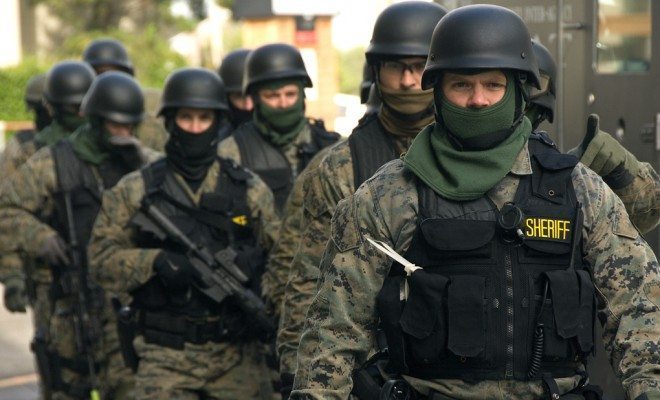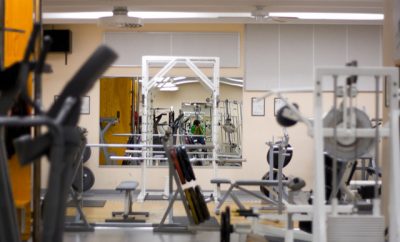
Crime
Militarization: Arming the Police Against American Citizens – Part 1
Last month, a SWAT team in Georgia severely injured a 19-month old child with a flash-bang grenade during a drug raid. No weapons or drug charges ended up being made and the child is currently hospitalized. It is not the first time something like this has happened. A former Marine was shot 23 times after police invaded his home, and false assumptions once led to a 92-year old woman’s death. Countless stories like these reflect how police culture is being reshaped to look more like the military.
Over $4.3 billion worth of surplus equipment, which was originally designed for warfare, has been transferred to state and local police agencies, according to the Law Enforcement Support Office. Nearly $450 million of that was transferred in 2013 alone. Since the 90s, federal law has enabled state and local police departments to receive old military equipment from the Department of Defense, often for free. Agencies can apply for and request surplus military equipment on a “first-come, first-served basis.”
Created by the 1997 National Defense Authorization Act, the 1033 program encourages state and local agencies to embrace paramilitary policing methods and equipment, even for drug raids. According to the U.S. Grants Office, “All DoD excess property can be used for counter-drug and other law enforcement activities with the exception of the operation of jails.”
In 1997, Professor Peter Kraska of Eastern Kentucky University provided substantial data and analysis in a paper titled “Militarizing Mayberry and Beyond.” His work states, “Between 1985 and 1995, the number of paramilitary units in agencies serving small jurisdictions (25,000 to 50,000 people) increased by 157 percent.” This helps illuminate the proliferation of American SWAT teams or police paramilitary units (PPUs). To find out more, I sought to interview Professor Kraska and was fortunate enough to speak with him over the phone.
“Forget causality, there was not even a correlation between the formation and the deployment of SWAT teams and the rise and fall of property and violent crimes… there’s no direct use of these teams to have any kind of impact on violent crime or property crime. It’s just not what they’re used for.”
– Professor Peter Kraska
The rationale for equipping police with military gear is generally rooted in their safety. Kraska acknowledges that paramilitary units may be useful in situations like school shootings, but he reminds us, “that’s the extreme rarity.” Instead of reacting, they are “mostly doing proactive contraband raids on people’s private residences for the purpose of collecting criminal evidence.” Kraska asserts that PPUs are not being forced to act for the safety of the community; they’re trained to, and choosing to, treat the War on Drugs as if it were actual war.
Most of the scrutiny has been placed on the Department of Defense’s 1033 program. Kraska mentions that news coverage frequently overlooks the role of other government departments in militarizing the police. For example, the Department of Homeland Security (DOHS) offers brand new equipment instead of the surplus material available from the DoD. In an episode of their video series called Fault Lines, Al Jazeera sheds light on recent American police militarization, discussing how DOHS grants for military equipment transfers total over $34 billion. The episode notes the lack of federal guidelines for these transfers, as state and local law enforcement have complete discretion in how the equipment is used.
Beyond the potential for abuse, there are deeper implications of police having military-grade weapons laying around at their disposal.
“It changes, or reinforces, the culture of the police department, and a dangerous element of police culture in a police agency, where they go from thinking of themselves as civilian police in the context of a democratically-controlled society to one where they are more like the military, more like soldiers… It provides for a cultural milieu that is antagonistic to the community.”
-Professor Peter Kraska
The political arguments should come to a halt here. Liberals and conservatives do share common sense. It’s common sense that serving warrants, conducting drug searches, and other routine tasks should never be carried out by police units designed to respond to the worst-case scenarios. The authority of the police is not augmented by militarization, it is corrupted by militarization. When our officers have complete discretion to use extreme prejudice with heavy weaponry, the result is a flash-bang grenade entering a toddler’s playpen.
—
Jake Ephros (@JakeEphros)
Feature image courtesy of [Oregon Department of Transportation via Flickr]








Comments